How to Use Worm Castings: An In-Depth Gardening Guide
Introduction
Worm castings, often referred to as vermicast or vermicompost, are the nutrient-rich excrement produced by earthworms. These tiny black or dark brown granules are packed with beneficial microorganisms, essential nutrients, and organic matter that enhance soil health and plant growth. Using worm castings in your garden can significantly improve plant vigor, yield, and resilience against diseases and pests. This comprehensive guide on how to use worm castings in gardening will walk you through everything you need to know about using worm castings in your garden.
What Are Worm Castings?
Worm castings are the end product of the decomposition of organic matter by earthworms. As earthworms consume organic material, such as vegetable scraps, paper, and leaves, they process it through their digestive system. The result is a nutrient-dense substance teeming with beneficial microbes. Worm castings are rich in nitrogen, phosphorus, potassium, and a variety of micronutrients essential for plant growth.
Benefits of Using Worm Castings
1. Nutrient-Rich
Worm castings contain a balanced blend of essential nutrients in forms readily available for plant uptake. They provide a steady supply of nutrients, including nitrogen (N), phosphorus (P), and potassium (K), which are vital for plant growth and development.
2. Soil Improvement
The organic matter in worm castings improves soil structure, enhancing its ability to retain moisture and nutrients. This leads to better root development and overall plant health.
3. Beneficial Microorganisms
Worm castings are loaded with beneficial microorganisms, such as bacteria, fungi, and actinomycetes. These microbes help break down organic matter, suppress harmful pathogens, and improve nutrient availability to plants.
4. Disease and Pest Resistance
The beneficial microbes in worm castings can help protect plants from diseases and pests. They create a healthy soil environment that discourages the growth of harmful organisms.
5. Environmental Sustainability
Using worm castings is an eco-friendly way to recycle organic waste, reducing the need for chemical fertilizers and minimizing environmental pollution.
How to Make Worm Castings
1. Set Up a Worm Bin
To start producing your own worm castings, you’ll need a worm bin. This can be a simple container with ventilation holes. Place the bin in a cool, dark location, such as a basement or garage.
2. Add Bedding
Fill the bin with bedding material, such as shredded newspaper, cardboard, or coconut coir. Moisten the bedding so it’s damp but not soggy.
3. Add Worms
Red wigglers (Eisenia fetida) are the best type of worms for composting. Add these worms to your bin.
4. Feed the Worms
Feed the worms small amounts of kitchen scraps, such as fruit and vegetable peels, coffee grounds, and eggshells. Avoid feeding them meat, dairy, and oily foods.
5. Harvest the Castings
After a few months, you can harvest the worm castings from your bin. Separate the worms from the castings using a mesh screen or by placing the castings in a bright area and allowing the worms to burrow down.
How to Use Worm Castings in Your Garden
1. As a Soil Amendment
Worm castings can be used as a soil amendment to improve soil structure, fertility, and water retention. Here’s how:
- Preparation: Before planting, mix worm castings into your garden soil. Use a ratio of 1 part worm castings to 4 parts soil. This can be done by tilling the soil or by simply mixing it in with a garden fork.
- Top Dressing: For existing plants, apply a layer of worm castings around the base of the plants. This method, known as top dressing, allows the nutrients to slowly seep into the soil as you water the plants.
2. In Potting Mixes
Worm castings are an excellent addition to potting mixes for container gardening. They enhance the nutrient content and improve the moisture-holding capacity of the mix.
- Mixing: Combine worm castings with your regular potting soil at a ratio of 1 part worm castings to 3 parts potting soil.
- Planting: Use this enriched potting mix to plant your flowers, vegetables, and herbs in containers.
3. As a Seed Starter
Worm castings provide a gentle and nutrient-rich environment for seed germination. Using worm castings as a seed starter mix ensures that young seedlings have access to essential nutrients from the beginning.
- Preparation: Mix worm castings with a light and sterile seed starting mix at a ratio of 1 part worm castings to 2 parts seed starting mix.
- Planting: Fill seed trays or pots with this mixture and plant your seeds as usual.
4. Making Worm Tea
Worm tea, a liquid fertilizer made from worm castings, can be used to provide plants with a quick nutrient boost.
- Brewing: To make worm tea, steep a handful of worm castings in a bucket of water for 24-48 hours. Stir occasionally to oxygenate the mixture.
- Application: Use the worm tea to water your plants or as a foliar spray. This method provides immediate nutrients and beneficial microbes to the plants.
5. As a Compost Activator
Worm castings can be used to speed up the decomposition process in your compost pile.
- Layering: Add a layer of worm castings to your compost pile along with other organic materials. The microbes in the worm castings will help break down the compost materials more quickly.
Specific Applications in Different Types of Gardens
Vegetable Gardens
Using worm castings in vegetable gardens can lead to healthier plants and higher yields.
- Preparation: Before planting, mix worm castings into the soil. For heavy feeders like tomatoes and peppers, use a higher ratio of worm castings to soil.
- Maintenance: Throughout the growing season, apply worm castings as a top dressing around the base of your vegetable plants to ensure a steady supply of nutrients.
Flower Gardens
Worm castings can enhance the growth and blooming of flowers by providing essential nutrients and improving soil structure.
- Preparation: Mix worm castings into the soil before planting flowers. For established flower beds, use worm castings as a top dressing.
- Maintenance: Apply worm castings around perennial flowers in the spring and fall to promote healthy growth and abundant blooms.
Herb Gardens
Herbs benefit from the gentle and balanced nutrients in worm castings.
- Preparation: Mix worm castings with potting soil or garden soil before planting herbs.
- Maintenance: Apply worm castings as a top dressing around herbs periodically to ensure they receive a consistent supply of nutrients.
Lawns
Worm castings can be used to improve the health and appearance of your lawn.
- Top Dressing: Apply a thin layer of worm castings over your lawn and water it in. This will enhance the soil structure, improve moisture retention, and provide essential nutrients to the grass.
- Soil Amendment: Mix worm castings into the soil when establishing a new lawn or overseeding an existing one.
Houseplants
Houseplants can thrive with the addition of worm castings to their potting mix.
- Preparation: Mix worm castings with your regular potting soil before repotting houseplants.
- Maintenance: Periodically add a small amount of worm castings to the top of the soil in your houseplant pots.
Tips for Using Worm Castings in Gardening Effectively
1. Use Fresh Castings
Fresh worm castings are the most potent and beneficial. Use them as soon as possible after harvesting to ensure maximum nutrient content and microbial activity.
2. Avoid Overuse
While worm castings are highly beneficial, using too much can lead to nutrient imbalances. Stick to recommended ratios and application rates to avoid over-fertilizing your plants.
3. Store Properly
If you need to store worm castings, keep them in a cool, dark place in an airtight container. This will help preserve their nutrient content and prevent the growth of unwanted pests.
4. Combine with Other Organic Amendments
Worm castings can be combined with other organic soil amendments, such as compost, leaf mold, and manure, to enhance their benefits. This combination can create a rich and diverse soil environment for your plants.
5. Observe and Adjust
Monitor your plants and soil regularly to observe the effects of worm castings. Adjust the application rates and methods based on the specific needs of your garden.
Common Questions About Worm Castings
1. Can I Use Worm Castings for All Types of Plants?
Yes, worm castings are suitable for all types of plants, including vegetables, flowers, herbs, trees, shrubs, and houseplants. Their balanced nutrient content and gentle nature make them ideal for various plants.
2. How Often Should I Apply Worm Castings?
The frequency of application depends on the type of plants and the soil condition. Generally, applying worm castings twice a year (spring and fall) is sufficient for most plants. For heavy feeders, you can apply them more frequently.
3. Can I Use Worm Castings with Synthetic Fertilizers?
While it’s possible to use worm castings with synthetic fertilizers, it’s not necessary. Worm castings provide all the essential nutrients and beneficial microbes that plants need, making synthetic fertilizers redundant.
4. Are There Any Plants That Don’t Benefit from Worm Castings?
Most plants benefit from worm castings, but some, like carnivorous plants, prefer nutrient-poor soil. For these plants, use worm castings sparingly or not at all.
5. Can I Make Worm Castings at Home?
Yes, making worm castings at home is easy and cost-effective. Setting up a worm bin and feeding the worms kitchen scraps is all it takes to produce your own vermicast.
Conclusion
Worm castings are a versatile and powerful addition to any garden. Their nutrient-rich composition, beneficial microorganisms, and ability to improve soil structure make them an invaluable resource for gardeners. Whether you’re growing vegetables, flowers, herbs, or houseplants, incorporating worm castings into your gardening routine can lead to healthier, more productive plants and a thriving garden. By understanding how to use worm castings in gardening effectively, you can unlock the full potential of this natural fertilizer and create a vibrant, sustainable garden.

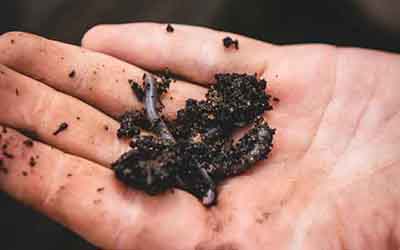

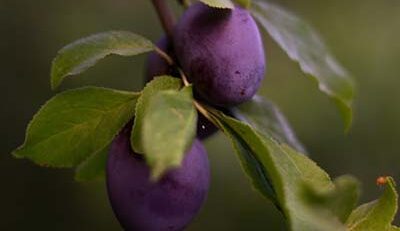
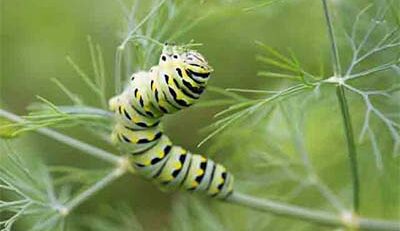



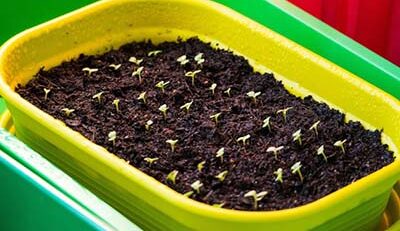
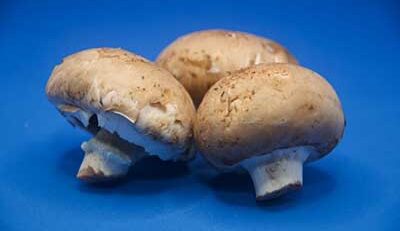
Leave a Reply